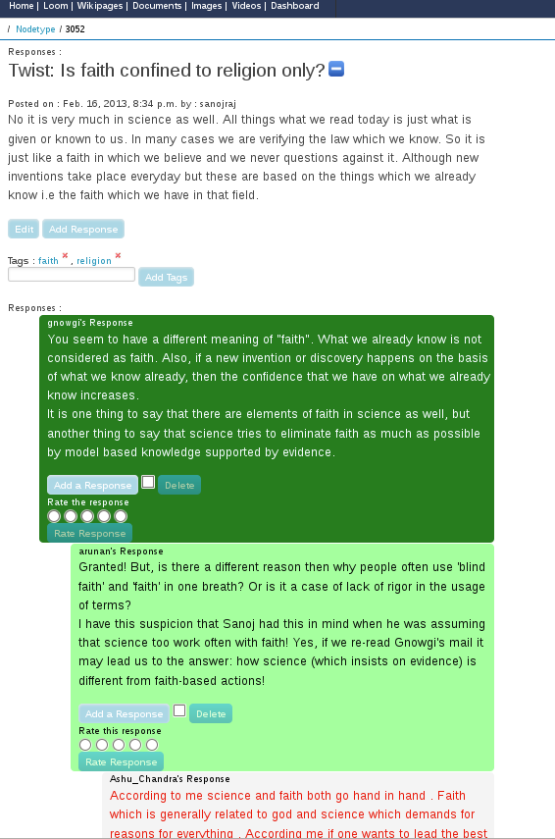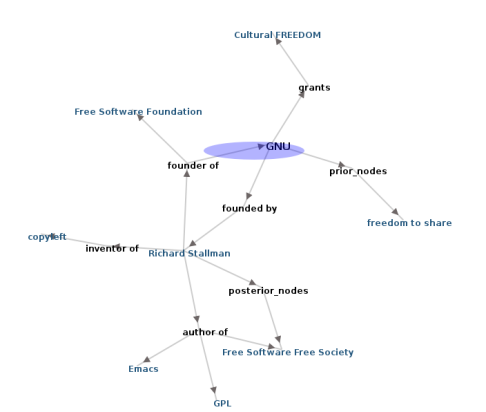This document is not written by me, but participated in the process along with others. I am a signatory to the declaration. I urge you to consider thinking about the issues raised and even if you agree with at least 80%, consider adding your signature. Please continue to participate in the dialogue to create a sustainable creative commons.
We can no longer put off re-thinking the economic structures that have been producing, financing and funding culture up until now. Many of the old models have become anachronistic and detrimental to civil society. The aim of this document is to promote innovative strategies to defend and extend the sphere in which human creativity and knowledge can prosper freely and sustainably.
This document is addressed to policy reformers, citizens and free/libre culture activists to provide them practical tools to actively operate this change. Read the full documents from the links given below.
FCForum Declaration: Sustainable Models for Creativity in the Digital Age [2 pages]
How To for Sustainable Creativity [30 pages]
1. Who Generates Culture?
In order to develop and grow, the human capacity for creativity requires access to existing culture, knowledge and information. Everyone can contribute to the production of culture, values and wealth on different scales, ranging from very basic to very complex creative contributions. The resources and time required for creative activities also vary in scale. We want to promote ways of liberating this time and these resources so that the distributed potential can be deployed in a sustainable way.
2. Basic Principles for Sustainable Creativity
- The restructuration of the cultural industries is not only necessary but inevitable.
- More culture is created and circulates in the digital era than ever before: in this context sharing has proved to be essential to the disseminate culture.
- The profits that the cultural lobbies are fighting to defend are based on the artificial production of scarcity.
- The cultural sphere needs to recognise the skills and contributions of all of its agents, not only producers.
- The digital context benefits creators as well as entrepreneurs and civil society. Appropriate models make it easier for users, consumers and producers to gain access to each other. The role of middle-men has to be revised in light of an approach based on collaboration.
- The Internet is an essential tool for establishing contact between creators and their audiences. This is one of the reasons why everybody must be guaranteed non-discriminatory access to it.
- Governments that don’ t promote the new forms of creation and diffusion of culture are generating lost profits for society and destroying its cultural diversity.
- As Free/Libre Software has shown, peer production and distribution are not incompatible with market strategies and commercial distribution.
Economic Models for Sustainable Creativity
The following list starts with the models that are most similar to those traditionally accepted by the cultural industries, and moves towards those that are closer to the idea of sharing that pertains to our age. Many of these models are currently actively implemented and are already working. We need to expand these conditions by removing barriers that limit their growth.
1. Pay for what you get
Or some advice for the restructuring of the cultural industries: the public is prepared to pay for cultural products or goods as long as they deem the price to be reasonable and paying does not restrict their freedom. Make it easy and accessible; make it affordable; don’ t make it compulsory, static and criminalised, make it optional and offer choice. Pay fair wages when you contract professional work.
2. Advertising
Between bombarding users with ads and the total absence of ads, there are intermediate, ethical options: Selective ads (accepting advertisements only from projects with affinities); giving users control over the consumption of ads; allowing users to request ads related to the article they are reading, for instance, …
3. Pay for a Plus
Sharing copies helps creators to build up a reputation, which then becomes the base for charging for services and other things that cannot be copied, such as live performances, works-for-hire, specially designed gadgets, attractive physical copies…
4. Freemium
Freemium is a business model that works by offering basic services, or a basic downloadable digital product, for free, while charging a premium for advanced or special features.
5. Contributions
A contribution-based model enables users to donate sums of money in order to help sustain a given project or enterprise. The more involved and respected users feel, the better this system works.
6. Crowdfunding
Enabling individual citizens or entities to contribute to a cultural enterprise by becoming stakeholders. This contribution can take the form of an investment before the work has been created, or via micro or macro credits or donations towards existing works.
7. Commons-based strategies and distributed value creation
The providers of commercial platforms for cooperation share their revenues with the creators who produce the material that makes their services valuable, while commoners are able to freely share and exploit the commons.
8. Collective Financing System
A flat-rate on internet connections can be consider only if it implies an equitable and democratic resource- pooling system and recognizes citizens rights to share and re-use works freely.
9. Basic income
When connecting the issue of free culture to visions of large-scale social transformations in capitalistic economies, the basic income idea propose to sustain the society as a productive body. A guaranteed basic income is a way to avoid precarity and redistribute economic wealth.
10. Public funding/policy making
We believe that in the context of a society of tax payers, culture must receive a share of public investment due to its undeniable social value. Social funding should not be seen as a substitute for public responsibilities in relation to the funding of culture and Free/Libre culture should not constitute an anomaly.
- Publicly funded works should be released, after a reasonable commercial life span, for circulation on digital networks so that the public who paid for them can access and re-use them.
- Tax deductions should promote micro-funding and the release of works without restrictive licences.
- The public should have the option to contribute to deciding how this public investment in culture is shared out.
- Alternative distribution channels should be encouraged. Cultural policies must work towards achieving greater cultural diversity and sustainable collaboration platforms.
- Networks of independent producers, distributors and authors should be supported, and they should be represented on public broadcasting.
- Impact statements should be a prerequisite for the introduction of any new cultural policy. We must analyze the effects that proposed regulations would have on on the cultural and knowledge commons before they are implemented.
Results
The Commons, Public Domain and Business
The new business models that consider collective production as a context that needs to be nurtured and safeguarded, and not simply as a context to exploit, are based on the premise that cooperation is compatible with market dynamics. The most evocative practical examples stem from free software communities. The “output” is shared under non-restrictive licences, allowing third parties to use and modify it as long as the same freedoms are obligatorily applied to derived works. This creates a commons that is constantly improved by successive contributions, while not preventing the commercial exploitation of the knowledge and skills arising from them and of the works themselves.
Users become generators of value, and join a virtuous circle of production and consumption that they benefit from.
Meanwhile, in this new context, it is necessary to defend, promote and implement the conditions that enable online collaboration.
Embroiled in a different logic, the traditional cultural industries want to keep feeding off collective production, without responding to the collaborative logic that is now current thanks to the Internet. These industries try to keep imposing appropriation frameworks onto the commons, becoming entrenched in a predatory idea of culture (the economy of scarcity), which is totally at odds with the philosophy of free culture (the economy of abundance).

